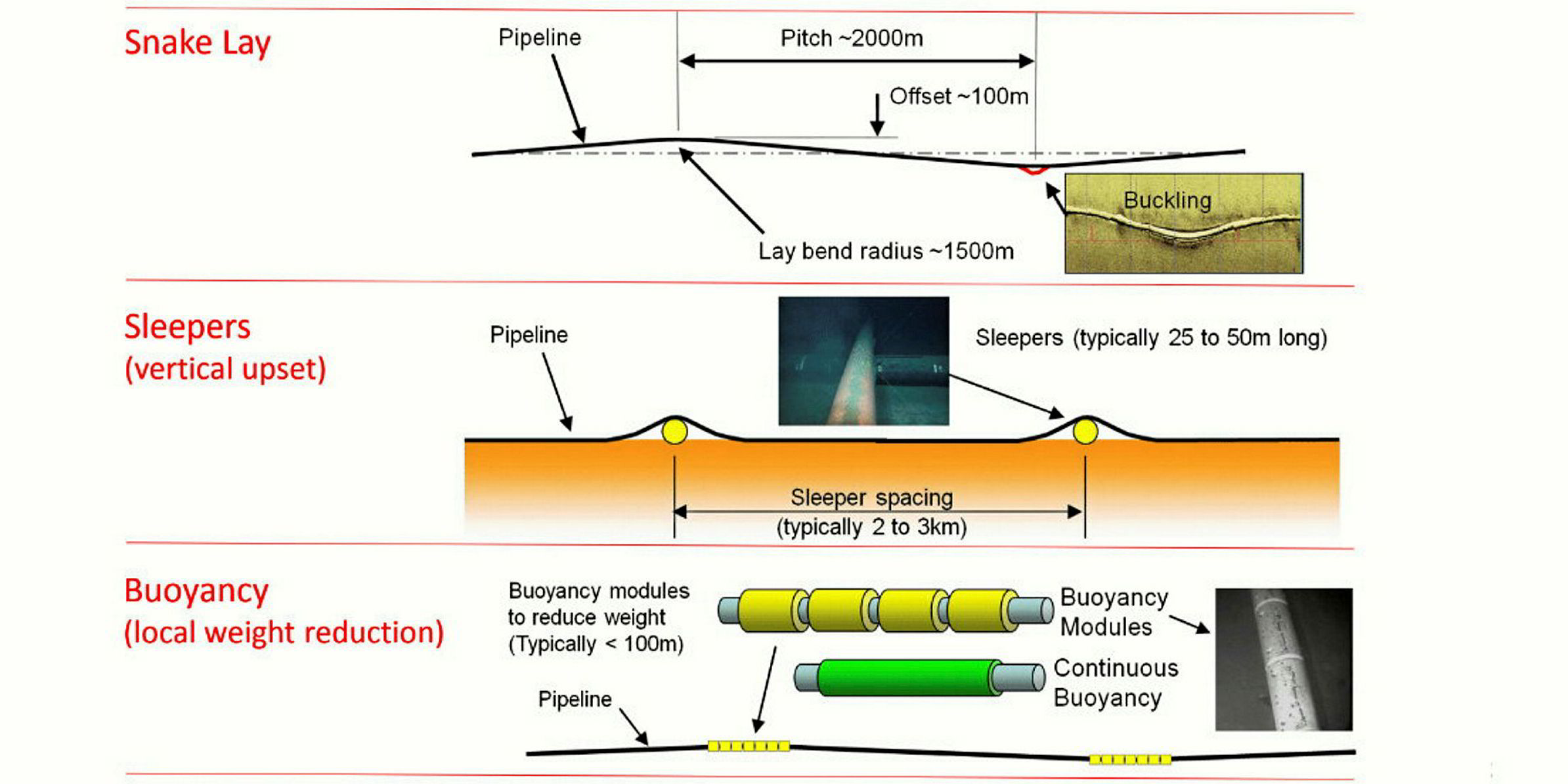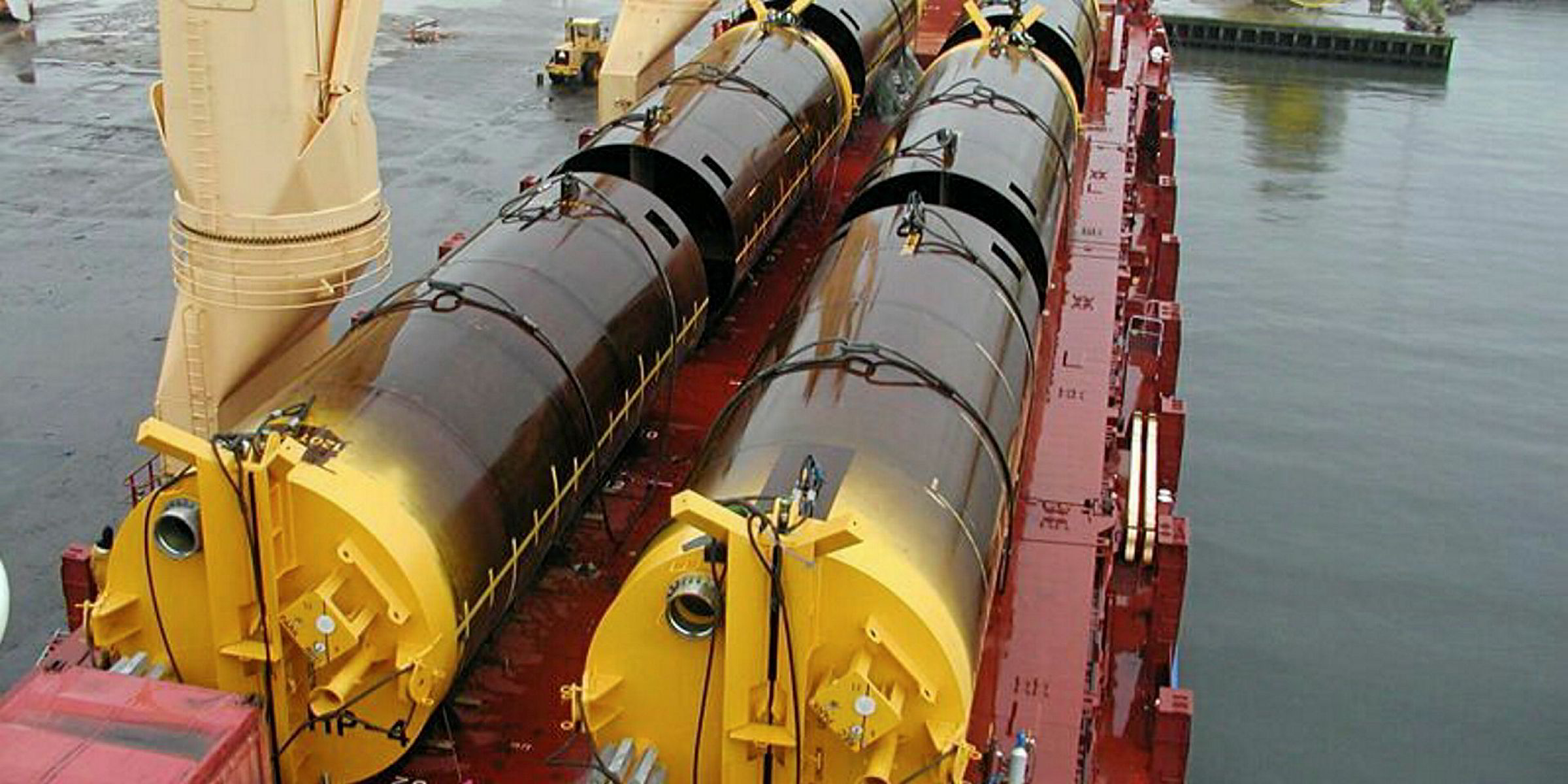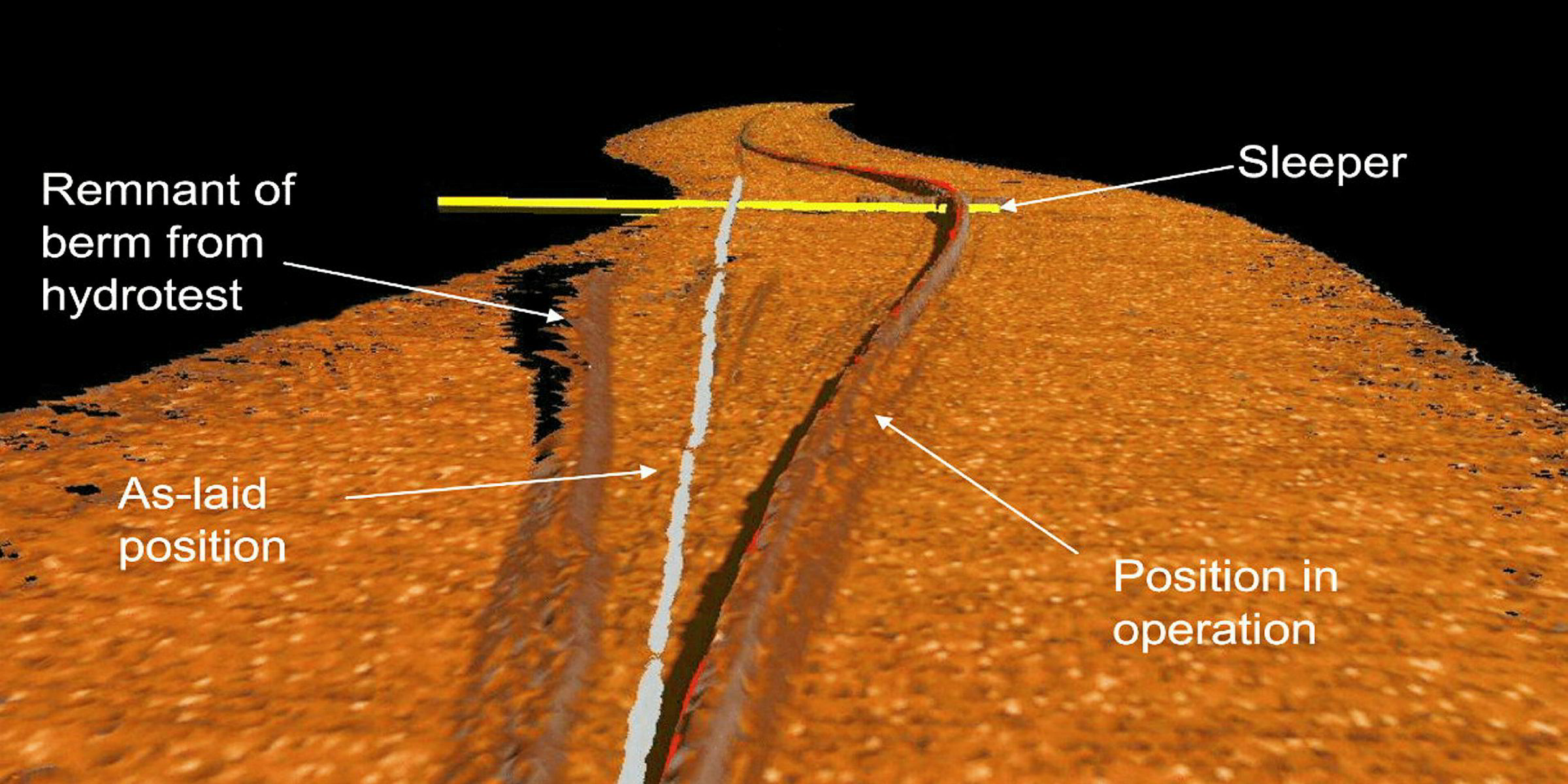Long subsea pipelines, never laid in a perfectly straight line to begin with, tend to move over time. It’s a problem exacerbated by the high-temperature, high-pressure conditions in which pipelines are increasingly required to operate.
Lateral pipeline buckling occurs at locations where effective axial force created by thermal loading, pressure loading and what engineers call the pipeline’s “out-of-straightness” are sufficient to overcome the restraining forces provided by the soil it rests on and the weight and stiffness of the pipe.
If uncontrolled, lateral buckling can create strains and high cyclic loads that may cause serious damage to the flowline. Unplanned “rogue” buckles can also damage structures such as in-line tees.

Each time a line is shut down and restarted, the flowline moves a bit.
David Bruton, Crondall Energy
Pipeline walking is a ratcheting in a pipeline’s axial direction due to variations in the operating conditions — periodic shutdowns and restarts, for example.
Over time, the expansion and contraction creates what David Bruton describes as “worm action”, in which the pipeline moves in one direction — most often downhill, if a line is installed on a slope.
Walking may be gradual, says Bruton, director, subsea for offshore consultancy Crondall Energy. But even a few metres of forward movement is enough to cause significant damage to subsea structures such as spools, pipeline end terminations, jumpers and risers.
“Each time a line is shut down and restarted, the flowline moves a bit,” he says. “Over many cycles, you will see quite a lot of movement at each end.”
The issue is most pronounced in deep-water pipelines that generally are not trenched, he adds.
Mitigation
Pipeline designers have several methods at hand to mitigate buckling. The effective force in the system may be reduced, for example, with in-line expansion spools or cooling spools.
But these technologies run up considerable costs. More common are methods to control the effects of buckling by encouraging it at strategic spots along the route.
Pipeline buckling was the focus of a joint industry project, Safebuck, which was launched by Atkins Boreas Consultants and ran from 2002 until 2015.
The JIP, which Bruton and fellow Crondall Energy subsea director Malcolm Carr, both Atkins engineers at the time, headed for 10 years, developed design guidelines for controlling lateral buckling and walking.
The JIP included an array of international operators, service companies and representatives from the US Bureau of Safety & Environmental Enforcement.
Designing for lateral buckling involves a good understanding of pipe-soil interaction (PSI) and the properties of the sand or clay where the pipe is laid. The information helps determine the type of “triggers” engineers may use to control buckling.
“The aim of lateral buckling is to relieve that force in the pipe,” Bruton says. Global buckling — in contrast to local buckling, a deformation of the pipe cross section — may be controlled using triggers such as sleepers, snake lay and buoyancy.

Sleepers, typically a few joints of large-diameter pipe, may be placed perpendicular to the flowline every few kilometres to create vertical buckles (gravel dump berms are also used to similar effect).
Snake lay describes a method in which the pipeline is laid in a series of gentle curves. The bend radius of the “snake” helps control the propensity for buckling.
A third method involves local weight reduction, either by removing concrete coating at certain intervals or by distributed buoyancy placed over a 60 metre to 200 metre section of the flowline to trigger buckling.
Recent advances in software have helped engineers choose the appropriate type and spacing of triggers, Bruton says.
“We use a probabilistic analysis,” he says. “That way we know approximately how many buckles are going to form, and make sure there are enough to share the load and keep the load in each below design limits. You have to do that to a high level of reliability.”
Under study
Pipeline walking has become an area of intense study in recent years, Bruton says. Last November, the UK’s Industry Technology Facilitator and Crondall Energy teamed up on a new JIP to develop pipeline anchoring and monitoring systems to mitigate pipeline walking risk and cut the cost of pipeline anchoring by half.
“One of the bigger challenges we have now is walking,” he says. “We addressed it to some extent with Safebuck. With the APT (Anchoring Pipeline Technology) JIP, our aim is to try and understand better ways of anchoring pipelines.”
Designing pipelines to allow for walking is notoriously challenging. “The biggest problem we have is the uncertainty in predicting (walking rates),” Bruton says. “The main aim of the JIP is finding ways to work with that uncertainty.”

Project schedules typically do not allow the luxury of evaluating numerous anchoring systems. Engineers therefore often take a pre-emptive approach, opting for very large pipeline suction anchors to be installed at pipeline ends to control walking — 100-tonne capacity anchors are typical, although Bruton says at least one project installed 350-tonne capacity anchors.
The APT JIP aims to provide operators with “less costly, more elegant design solutions,” he says.
An optimised distributed-anchoring system could cost half as much as a traditional pre-installed pipeline anchoring system, for a savings of $5 million or more on a project that requires several anchors over the length of a pipeline.
Bruton and others involved in the JIP envision a two-pronged approach that involves better monitoring and more strategic anchor placement.
“It’s a slow process in which you can watch it walking and then mitigate only if walking rates are excessive,” he says.
“The aim would be to have a more effective way to monitor pipeline walking and to have an anchor design that can be retrofitted and is quite easy to install.
"Then we could install a number of anchors along the pipeline rather than one big anchor at the end. That is a more efficient way to control walking.”
Bruton notes that there are “several current international projects dealing with the design issues associated with lateral buckling and walking of pipelines".
“These phenomena do interact and that can make the design overly complex,” he says. “Simplifying the design process is a major aim of the APT JIP."
